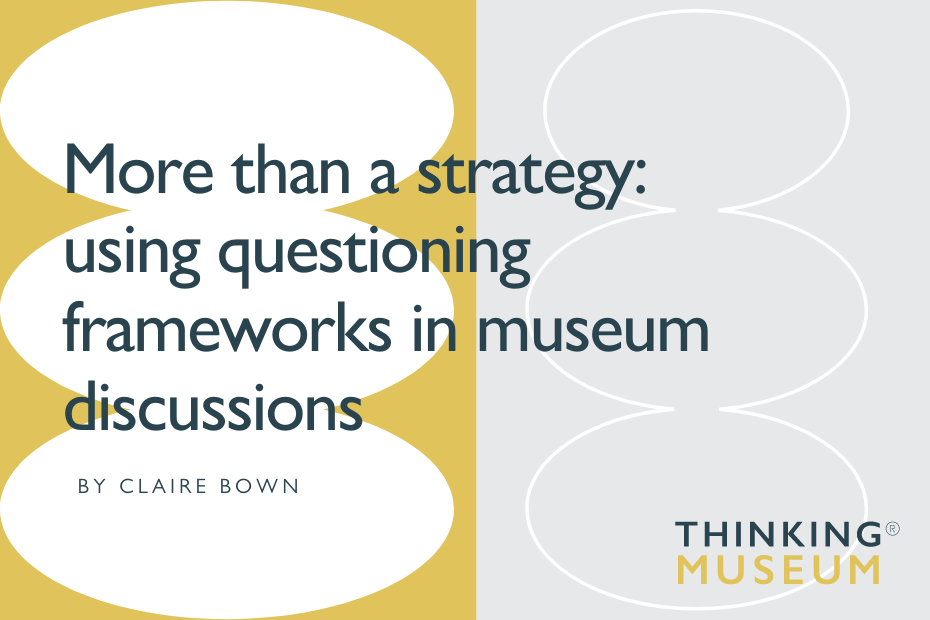I was recently talking to a fellow museum educator about how they were given a 10 minute training on how to use thinking routines (from Harvard Graduate School of Education’s Project Zero) in their museum. A few routines were enthusiastically explained to them and they were told that these routines could be inserted ‘ad-hoc’ into museum programmes to inject a little more participation and conversation. Whilst this may provide a quick-fix for those moments when you want to enliven a tour, this is not how thinking routines are intended to be used nor how I envisage their use or potential for use in the museum.
When I facilitate in-depth workshops and training programmes for museum educators and docents, I always stress that the use of any questioning framework to support and guide inquiry-based discussions – such as thinking routines – is more than a strategy or an activity to use as and when required in the museum. Before selecting any questioning framework, routine or protocol to use with a work of art or an object, it is first important to establish the desired outcome for that discussion and then to choose the correct framework to achieve those goals. This allows different types of questioning frameworks to be used around the museum and to specifically focus on certain types of thinking with different objects.
Questioning frameworks and protocols provide a structure for making meaning and give participants an introduction to the process of thinking slowly and carefully about art and objects. Used regularly and as part of the ‘invisible structure‘ of your programme or guided experience, these frameworks become part of your practice. Every time you use a questioning framework, you invest something of yourself – your own unique way of facilitating – into it.
For the participants, the process of using a questioning framework encourages everyone to offer their thoughts to the discussion. As all comments are received non-judgementally by the museum educator, a more balanced discussion takes place where everyone feels they can take part. The process of using a framework also teaches participants to respect and listen to other’s opinions. Everyone profits from the ‘distributed intelligence’ of the group as individuals are able to use and build upon other’s experience and interpretations. This way of working, where a group reasons together out loud, puts forward new ideas, responds to and builds on the ideas of others and generates further questions is known as a community of collaboration in the Thinking Museum® Approach.
Using questioning frameworks is not just a quick fix for those quiet moments on a group tour; it is about embracing an inquiry-based approach in the museum. Emphasis is placed on how the group interprets a select group of objects through open-ended questions. Value is placed on gaining new perspectives and knowledge, ideas, thoughts and opinions from the participants themselves. The aim is to be inclusive and include everyone in the discussion regardless of age, ability of background. Ultimately the goal is to foster and encourage a community of collaboration that all feel happy, willing and able to contribute to the discussion taking place.
Sign up for my Curated newsletter
Every other Friday I share a small dose of curated inspiration. It might be things I’ve read, things I’ve listened to or things I’ve watched.
Hear about my latest podcast episode and read useful tips, recommendations and things I love. Join via the button below.

Pingback: Day 116: Five Idea Friday (Neil Stephenson, District Principal) |
Pingback: Field Trips that Teach Thinking Skills | Museum Questions
Pingback: Field Trips that Teach Thinking Skills - Thinking Museum